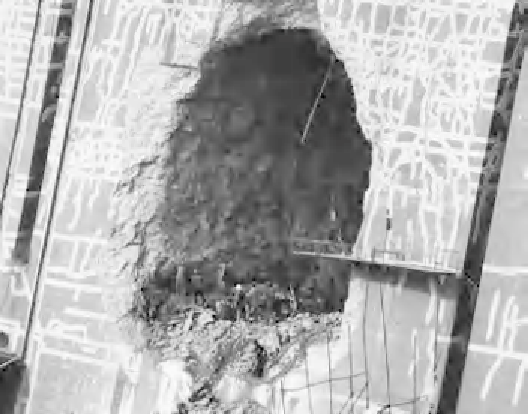Geology Reference
In-Depth Information
Figure 7.4
Cracks in face of the Pracana Dam, Portugal, due to alkali-silica reactivity from use of
Safety Department at EDP, Portugal).
7.3.4 Concrete aggregate reaction: Pracana Dam,
Portugal
Pracana Dam is a 60m high concrete gravity buttress dam built
between 1948 and 1951 and located in the centre of Portugal, on
the Ocreza River, a tributary of the Tagus River. In 1962, cracks
were detected in some buttresses and, in 1964, seepage through
the dam increased suddenly (Gomes
et al
., 2009). Cracking further
developed together with progressive upward movement of the
crest and downstream movement of the dam. Cores were drilled
into the dam and samples taken to analyse deposits in cracks and
the aggregate and to conduct expansion tests. It was established
that alkali-silica reactivity (ASR) of the locally derived aggregate,
including quartzite, milky quartz, feldspar, granite and shale/grey-
wacke, was probably the cause for the swelling phenomenon. A
photograph of the crazing resulting from the ASR is given in
Figure 7.4.
Remedial works included sealing of individual cracks,
resin grouting and placing a 2.5mm PVC geomembrane with
geotextile on the upstream side of the dam. As illustrated by this
case, alkali-silica reactivity in concrete can cause severe deteriora-
tion and necessitate expensive remediation and yet is readily
avoided if the mineralogy of the aggregate is considered properly
and appropriate reactivity and expansion tests conducted when
the aggregate is selected for the project (Smith & Collis, 2001).

